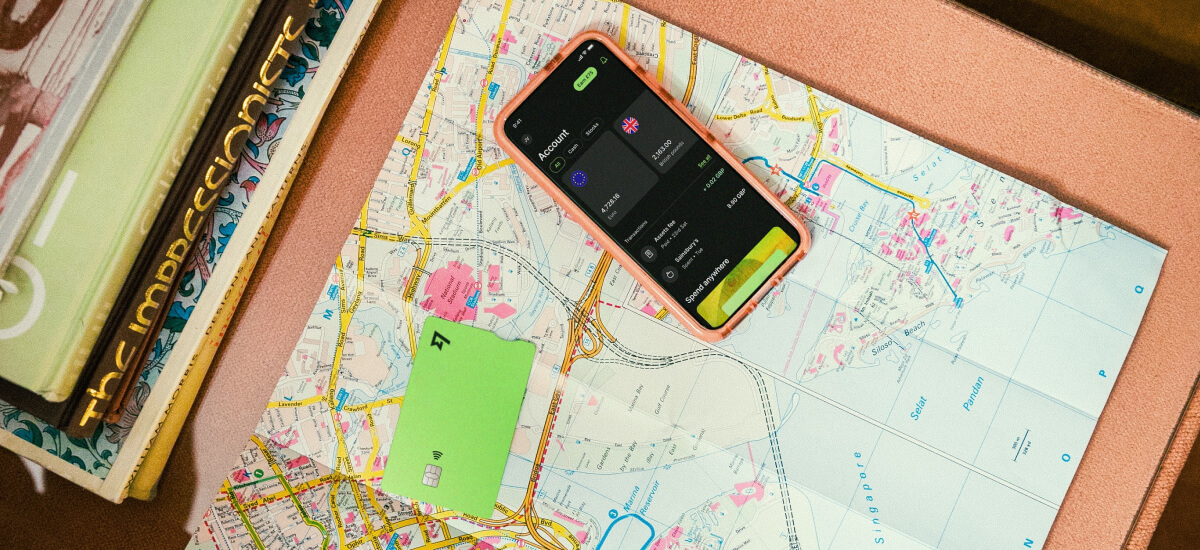How much is a security deposit? 2025 guide
Everything you need to know about security deposits

Many Americans are drawn to the idea of buying property in Italy. The country has amazing food, art and a high standard of living – what's not to love?
But unless you're paying cash, you'll need to navigate the Italian mortgage system, which can be tricky if you don't know what to expect.
You'll need to prepare for higher down payments and stricter lending criteria. But with the right knowledge and expectations, non-residents can finance an Italian property.
Yes, US citizens can get a mortgage in Italy, but you should be prepared for a more demanding process than you'd face at home.
Italian banks can be conservative in their lending practices (for both citizens and non-Italian residents). Not every Italian bank works with foreign buyers, but your chances of getting a mortgage are likely higher in urban areas like Rome or Milan.
The main thing to keep in mind is that Italian banks typically expect foreign buyers to pay a hefty down payment - often between 40% and 50% of the property's value.¹ But this will vary depending on the bank and your financial situation.
You don't need Italian citizenship or residency to apply for a mortgage loan, but there are certain legal requirements you'll have to meet.
Treaty of reciprocity: Your country must have a treaty of reciprocity with Italy. This treaty allows citizens of both countries to buy property in each other's territories. The US and Italy have this treaty, so there are no restrictions on Americans purchasing property in Italy.
Codice fiscale: This is Italy's equivalent of a tax ID number, and you'll need it for most financial transactions. You can get it for free through the Italian Revenue Agency (Agenzia delle Entrate) or at an Italian consulate abroad.
Italian bank account: Most mortgage lenders will require you to open an Italian bank account. You'll need your codice fiscale to do this, so handle that first.
These are the main legal requirements for Italian mortgages, but there are also important financial criteria to take into consideration. More on that later.
Italian mortgages come in two types: a fixed-rate mortgage or a variable-rate mortgage.
Fixed-rate mortgages (mutuo a tasso fisso)
These mortgages have the same interest rate throughout the loan term. They may have higher rates than variable mortgages, but they give you the security of knowing exactly what you'll pay each month.
Variable rate mortgages (mutuo a tasso variabile)
These are more common in Italy and usually start with lower initial rates. Your monthly payments will change based on market conditions and the Euribor rate (the interest rate at which European banks lend money to each other).
Talk to your bank or mortgage broker to figure out which type of Italian mortgage is right for you.
Mortgage rates in Italy reached 4.42% in 2023, which is the highest rate recorded since 2009.²
As a non-Italian resident, some banks may give you an even higher rate, so make sure to carefully consider your options. It's a good idea to get in touch with multiple lenders to see what their rates are.
You should be prepared to pay a large down payment when applying for an Italian mortgage. Most banks require a down payment of 40-50% of the property value for foreign buyers.¹
Loan terms typically range from 20-25 years, but you can find options anywhere from 5 to 30 years depending on the lender.¹
Overall, Italian banks require you to make a substantial cash investment and show a lot of financial stability. This is true for many overseas mortgages.

Now that we covered some of the basics of Italian mortgages, you may be wondering: how to send money to pay for your property overseas?
Wise offers you a quick, secure and transparent way of sending money to Italy. You get the mid-market exchange rate for your payments and see how much it’s charged for the transfer before sending the money from your bank.
With the Wise Account you can also hold 40+ currencies, spend money in 150+ countries, and receive like a local in 9 different currencies.
Please see Terms of Use for your region or visit Wise Fees & Pricing for the most up to date pricing and fee information
Here are a few things to think about before you start the mortgage process in Italy.
| Item | Details |
|---|---|
| Mortgage broker | Brokers often have relationships with multiple banks and understand which ones are more likely to work with foreign buyers, but they charge additional fees. |
| Credit history | Italian banks will look at your bank statements, income stability and any existing debts, so make sure to show a strong history of managing your money responsibly. |
| Down payment | Be prepared for a large down payment, typically 40-50% of the property value.¹ Start saving for it early and if you can, save more than the required minimum. |
| Italian bank account | You'll need to open an Italian bank account before applying for a mortgage. This process requires a codice fiscale (Italian tax ID number) and can take a few weeks to complete. |
| Additional costs | Budget for extra expenses beyond the property price, such as notary fees, registration tax, VAT, and legal fees. It's a good idea to talk with a real estate lawyer to get an idea of how much purchase-related costs are going to be. |
| Tax implications | If you own a property in Italy, you'll have to pay an annual property tax (IMU), which ranges from 0.4% to 0.8%.³ If you decide to rent out your property, the rental income tax is typically 21%.⁴ |
| Residency limitations | Buying property in Italy doesn't automatically give you the right to live there year-round. If you don't have Italian residency, you'll only be able to stay in the country for up to 90 days within any 180 days.⁵ |
| Insurance requirements | Most Italian mortgage lenders require you to have property insurance. This insurance will cover situations like fire, explosion and natural disasters. You may have to get a life insurance policy, too. |
In other words, a property purchase in Italy comes with many nuances.
| 💡 Learn more about buying property abroad as an American in our full guide. |
|---|
Different banks have different requirements, but here's what you'll typically need to apply for a mortgage in Italy:
- Valid passport or ID
- Codice fiscale (Italian tax ID number)
- Last year's tax return
- Bank statements from the last 12 months
- An employment contract or proof of self-employment
- Payslips
- Current property ownership documents or other assets (if any)
- Preliminary purchase agreement for the property
- Proof of any existing debt obligations
- Property valuation report
Some banks may ask for extra documentation. Giving a mortgage loan to foreign clients is risky, so lenders want to make sure you're credible and capable of paying them back.
Here are the typical steps you can expect when applying for mortgage loans in Italy.
Step 1. Do your homework
Spend some time researching Italian neighborhoods and property prices. Consider visiting or renting in different neighborhoods to get a taste of life there.
Step 2. Get your codice fiscale
You'll need this Italian tax ID for everything financial in Italy, and it's a good idea to get it as early as possible. You can get it for free through the Italian Revenue Agency (Agenzia delle Entrate) or at an Italian consulate abroad.
Step 3. Open an Italian bank account
Some banks can help you do this, but you can also do it yourself once you have your codice fiscale.
Step 4. Find a broker (optional)
A mortgage broker who knows the Italian market and has experience working with foreigners can be incredibly helpful, but you're not required to work with one.
Learn more about international mortgage lenders here.
Step 4. Start property search
When you find "the one," you'll typically sign a preliminary agreement and pay a deposit.
Step 5. Gather your paperwork
Your bank will need quite a bit of documentation - things like tax returns, bank statements, proof of income, and employment details. You may also have to translate these documents into Italian and get them legalized.
Step 6. Submit your application
Apply for an Italian mortgage with your chosen bank.
Step 7. Wait for the property check
The bank will send someone to evaluate the property to make sure it's worth what you're paying.
Step 8. Review and accept the offer
If approved, you'll get a formal mortgage offer. Read it carefully to make sure you understand all the terms before signing.
Step 9. Close the deal
The final step is signing all the paperwork with a notary present. Once that's done and you've paid the down payment, you're all set!
It typically takes between 20 to 60 days for your mortgage to get approved.⁶ But the timeline ultimately depends on the bank and how quickly you can provide all required documentation.
Many moving pieces go into preparing your mortgage application. Here are a few things to keep in mind:
Start early: Begin the process well before you plan to purchase. Getting your codice fiscale and an Italian bank account set up early can save you a lot of time later
Get professional support: Think about working with a qualified real estate agent, mortgage broker and/or lawyer
Keep your documents in order: You'll need to prove that you're reliable and financially stable
Consider a larger down payment: If possible, going over the required 40-50% can improve your chances of approval and potentially get you a better rate
Be patient: The Italian banking system may not be as fast as what you're used to in the US, so embrace it and build extra time into your planning
With the right preparation and mindset, getting a mortgage in Italy as a foreigner becomes easier.
Getting a mortgage in Italy is more difficult than in the US, especially for foreigners. But it's not impossible! You'll face more paperwork, stricter income requirements and higher down payments (typically between 40% and 50% of the property's value), but many Americans successfully get mortgages in Italy.¹
Working with a mortgage broker who specializes in foreigners can be helpful.
Most non-residents can buy property in Italy - as long as your country has a treaty of reciprocity with Italy. Italy and the US have this treaty, so Americans can buy houses and apartments without any restrictions.
Keep in mind that if you’re not buying in cash, you'll likely need a big down payment (often 40-50%) to get a mortgage.¹ Owning Italian property also doesn't give you any special residence rights. You'll still be limited to tourist visa restrictions unless you qualify for residency in another way.
The actual process of buying property in Italy isn't difficult for Americans, but financing your purchase can be. Italian banks typically require foreign buyers to make larger down payments and meet stricter financial criteria than they do for Italian citizens and residents. But getting a mortgage in Italy as a foreigner is still possible!
As a foreign buyer, you'll typically need to put down between 40% and 50% of the property's value.¹ For example, if you're buying a 300,000 EUR property, you might need to have 120,000-150,000 EUR ready for the down payment.
This is not a legal requirement, so you may be able to negotiate better terms with your bank.
You can get a mortgage in Italy as a foreigner, but it requires careful planning and a healthy savings account. That said, the reward - owning your own piece of Italy - can make it all worth it!
Sources
Sources checked 11.14.2024
*Please see terms of use and product availability for your region or visit Wise fees and pricing for the most up to date pricing and fee information.
This publication is provided for general information purposes and does not constitute legal, tax or other professional advice from Wise Payments Limited or its subsidiaries and its affiliates, and it is not intended as a substitute for obtaining advice from a financial advisor or any other professional.
We make no representations, warranties or guarantees, whether expressed or implied, that the content in the publication is accurate, complete or up to date.

Everything you need to know about security deposits

Learn all about different ways to get an overseas property mortgage as an American and gain unique insights to prepare yourself for the whole process.

Get a full overview of the best property management software systems for small landlords to easily track and manage their overseas property.

How to buy your first rental property overseas? Here's a detailed guide that can help you understand the challenges and steps for making an investment.

What are the best property management software systems for managing student housing? Take a look at our list and choose the most suitable option for you.

Are you thinking about making smart property investment decisions and wondering how rental yield is calculated? Have a look at our guide to find out.